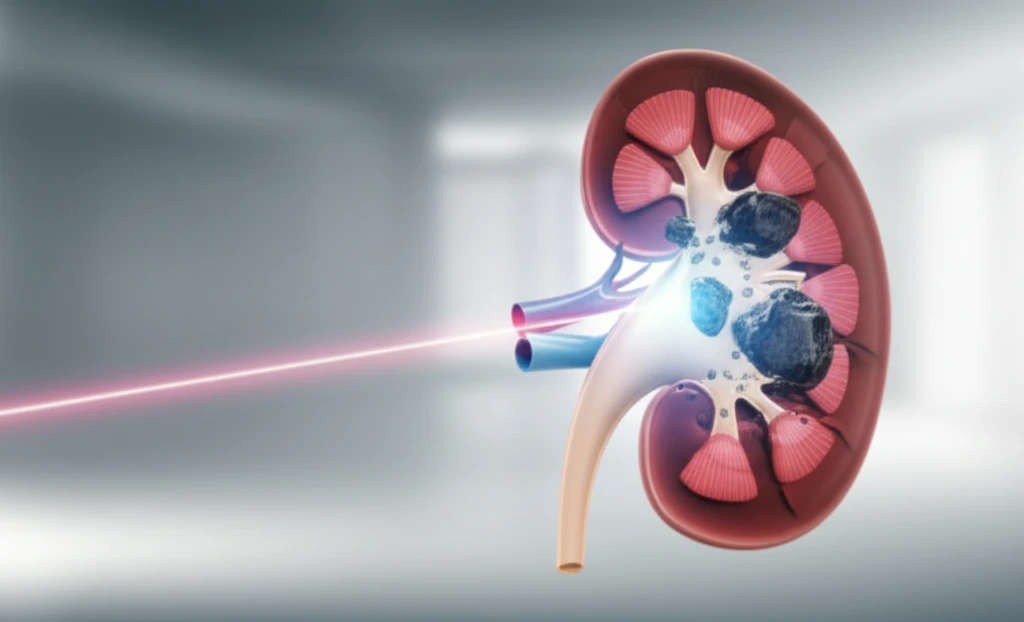
Moses Technology Revolutionizes Kidney Stone Treatment: Is Mini-PCNL the Future?
"Discover how the innovative Moses laser technology is making minimally invasive kidney stone removal safer, more efficient, and potentially an alternative to traditional methods."
Kidney stones affect millions worldwide, causing significant pain and discomfort. Traditional treatments often involve invasive procedures with lengthy recovery times. However, recent advancements in medical technology are paving the way for less invasive and more effective solutions. One such breakthrough is the integration of Moses technology with mini-percutaneous nephrolithotomy (mini-PCNL), offering a promising alternative for patients seeking relief from kidney stones.
Mini-PCNL is a minimally invasive procedure used to remove kidney stones through a small incision in the back. Unlike traditional PCNL, which requires a larger incision, mini-PCNL utilizes smaller instruments, resulting in less pain, reduced bleeding, and faster recovery times. Combining this technique with the Moses laser system further enhances its precision and efficacy.
This article will delve into the innovative use of Moses technology in mini-PCNL, exploring its benefits, how it works, and why it's becoming an increasingly popular choice for treating kidney stones. We'll examine the experiences of medical professionals and patients, providing a comprehensive overview of this groundbreaking approach to kidney stone management.
What is Moses Technology and How Does it Enhance Mini-PCNL?

Moses technology is a cutting-edge laser system designed to optimize holmium laser lithotripsy, a technique used to break up kidney stones. The system modulates the laser pulse, creating a 'Moses effect' that reduces stone retropulsion—the backward movement of stone fragments during the procedure. This is particularly advantageous in mini-PCNL, where maintaining clear visibility and control is crucial due to the smaller working space.
- Reduced Stone Retropulsion: The Moses effect minimizes the backward movement of stone fragments, improving visibility and control.
- Optimized Fragmentation: The Contact and Distance modes allow for precise laser settings, enhancing fragmentation efficiency.
- Minimal Tissue Damage: The controlled laser pulses reduce the risk of injury to surrounding tissues.
- Versatility: Suitable for various stone sizes and locations, making it a versatile tool for kidney stone management.
The Future of Kidney Stone Treatment
The integration of Moses technology with mini-PCNL represents a significant advancement in kidney stone treatment. Its ability to reduce stone retropulsion, optimize fragmentation, and minimize tissue damage makes it a valuable tool for urologists. As technology continues to evolve, we can expect even more innovative solutions that improve patient outcomes and quality of life. For individuals seeking relief from kidney stones, consulting with a urologist to explore the potential benefits of Moses technology and mini-PCNL may be a step towards a stone-free future.
